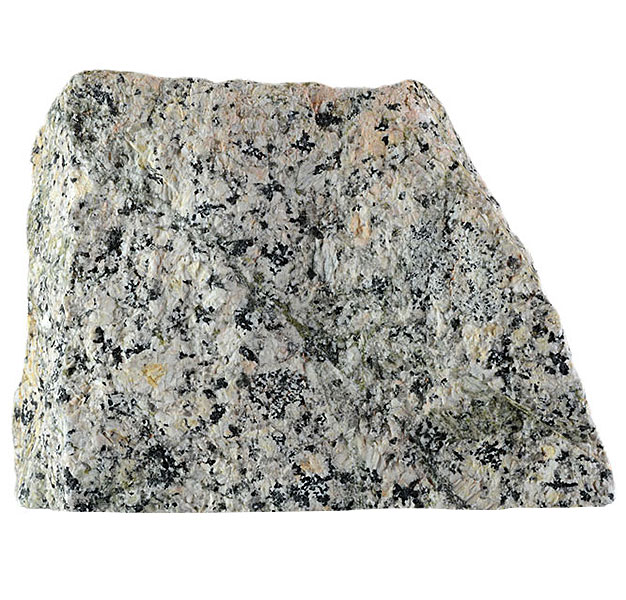
Fact sheet
Northampton Sand Ironstone is a sedimentary rock unit of Jurassic age that extends from Lincoln to Towcester in Northamptonshire, and this sample is from Stanion Lane railway, near Corby. This rock was a major source of iron ore for the steel manufacturing towns of Corby and Kettering. The ironstone has been secondarily enriched by weathering which caused dissolution of calcium and iron carbonate, and oxidation of the iron minerals to limonite, increasing the iron content of the rock.
In thin section this oolitic ironstone is composed of spherical concretions (ooids), cemented by fine grained sparry calcite. Note that several of the ooliths were lost during the preparation of the thin section. The ooliths formed in shallow, well-stirred water in which chemical precipitation of iron compounds predominated. Ooliths consist of concentric growths around a nucleus, which may be a shell fragment, quartz grainor algal pellet. The mineral chamosite is the most common constituent of the ooliths. Siderite and limonite are secondary iron-rich species that replace chamosite, and also authigenic magnetite and pyrite, contributing to the elevated iron content of the rock.
The United Kingdom Virtual Microscope (UKVM) collection consists of igneous, sedimentary and metamorphic rocks from around the UK.
It is intended as a teaching resource, helping to tell the story of the common rock types and how they form, and reflecting the history of the UK at the margins of the continent of Europe. The collection is a series of teaching sets, for example igneous rocks from the North Atlantic Igneous Province and SW England; high-temperature metamorphic rocks from Scotland and low-temperature metamorphic rocks from Wales; and sedimentary rocks, including English limestones and sandstones.










